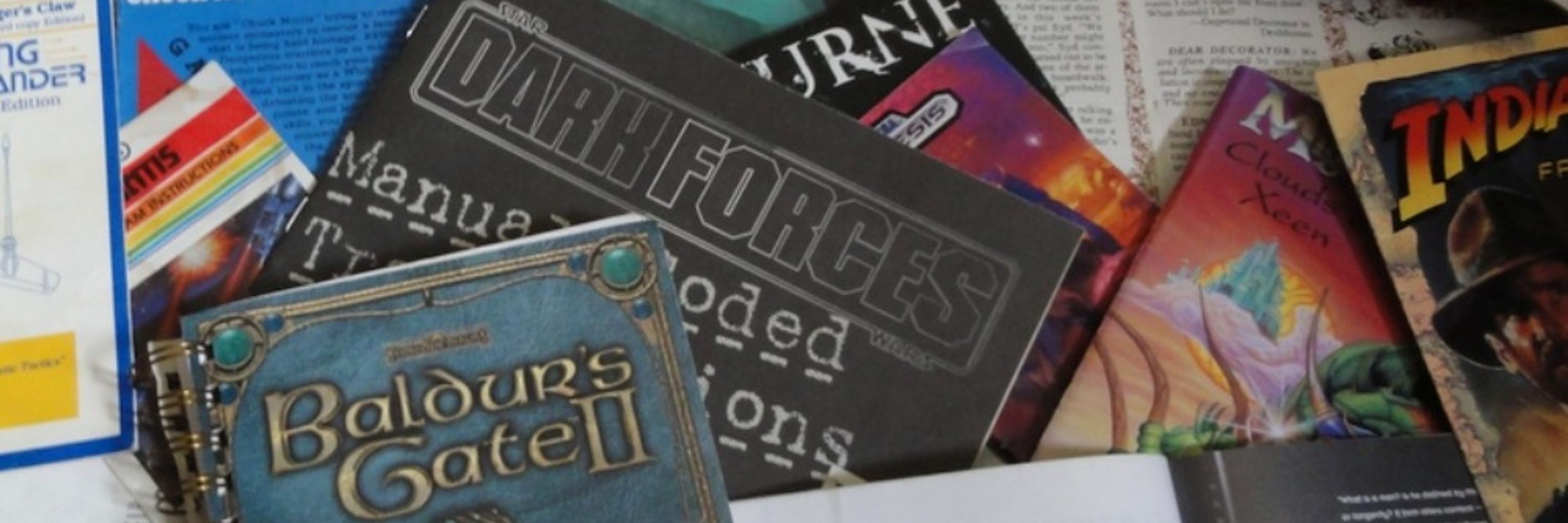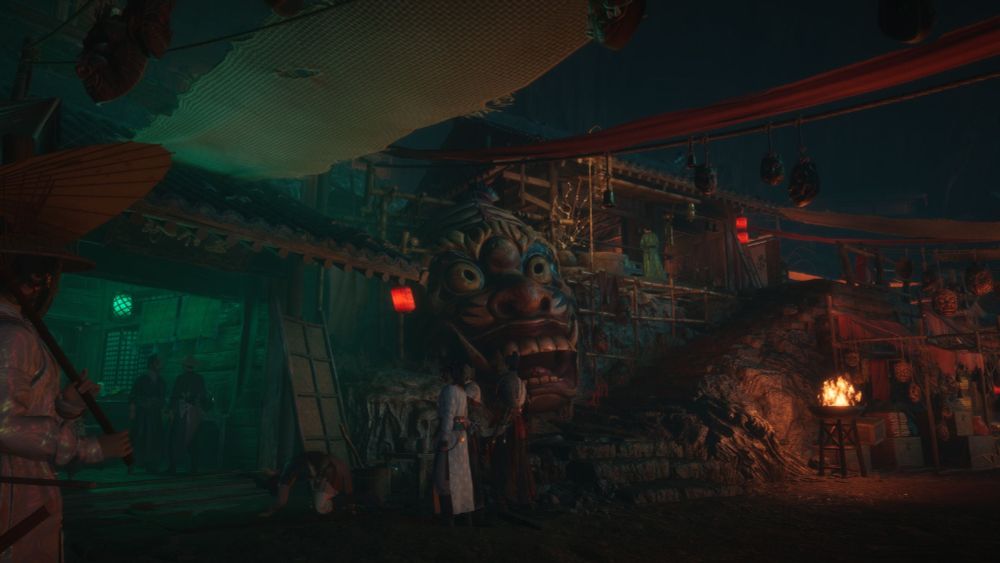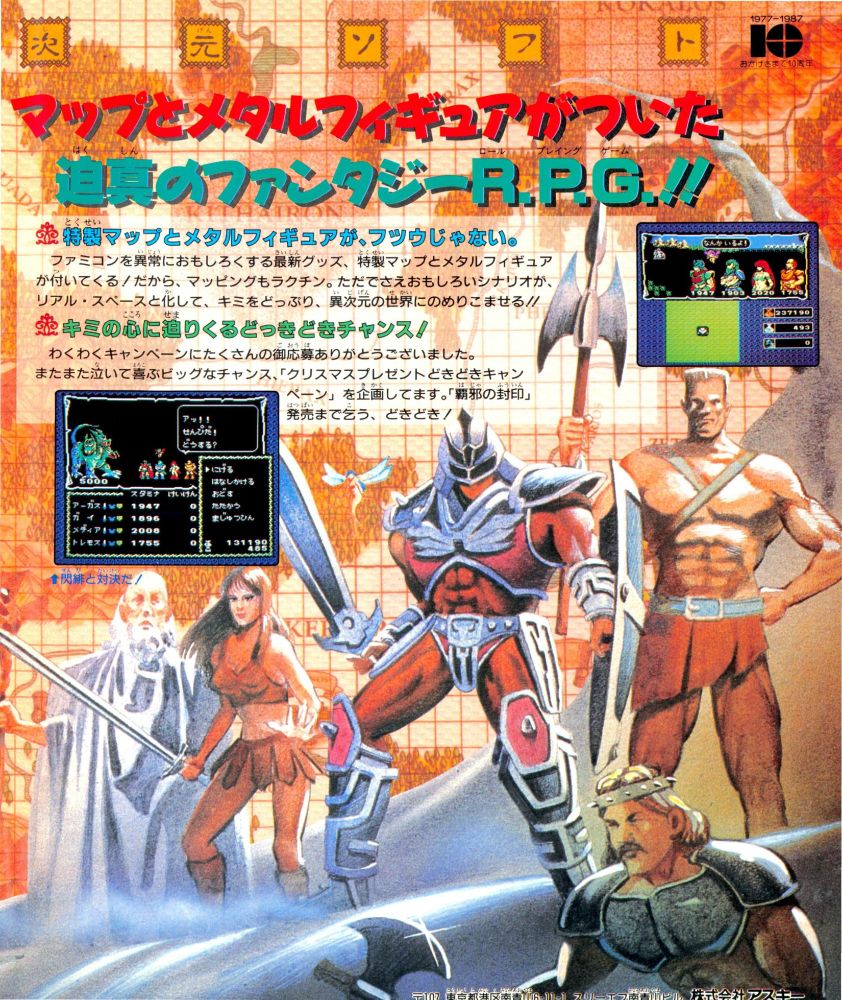




The third entry in Masaya's series acted as a prequel setting the stage with a vast character roster, new mechanics, and even the potential for romance!

The third entry in Masaya's series acted as a prequel setting the stage with a vast character roster, new mechanics, and even the potential for romance!
A republic forged from revolution finds itself with enemies from within while you, and a few brave friends, fight to save it!


A republic forged from revolution finds itself with enemies from within while you, and a few brave friends, fight to save it!
Thinking of getting a healing potion or two!
Thinking of getting a healing potion or two!
Jack Crane illustrated the cover for Dragon's November '82 issue showing what happens when a poor turkey (and the table) experiences the majesty of a critical hit!

Jack Crane illustrated the cover for Dragon's November '82 issue showing what happens when a poor turkey (and the table) experiences the majesty of a critical hit!
This 1996 ad from Japan shows off a roster of characters living in a fantasy world where a mysterious wish has somehow summoned you, a pachinko player, to save it!

This 1996 ad from Japan shows off a roster of characters living in a fantasy world where a mysterious wish has somehow summoned you, a pachinko player, to save it!
Dragon Wars started out as Bard's Tale IV but when Interplay left EA to go indie (and with EA still holding onto the Bard's Tale rights at the time), renamed it. Instead of demonic horrors, dragons would be shoehorned in.
Illustration by Boris Vallejo

Dragon Wars started out as Bard's Tale IV but when Interplay left EA to go indie (and with EA still holding onto the Bard's Tale rights at the time), renamed it. Instead of demonic horrors, dragons would be shoehorned in.
Illustration by Boris Vallejo

Brought to new audiences by Sierra On-Line in 1990, the fifth entry in Falcom's Dragon Slayer series packed plenty of action along with choosing a career for party-less characters to earn gold in and picking which quests to undertake!
Brought to new audiences by Sierra On-Line in 1990, the fifth entry in Falcom's Dragon Slayer series packed plenty of action along with choosing a career for party-less characters to earn gold in and picking which quests to undertake!
This 1993 ad from Japan shows off the box art and screenshots of its anime inspired cut scenes!

This 1993 ad from Japan shows off the box art and screenshots of its anime inspired cut scenes!
Teasing a release date of January 29th the next year, the fate of Earth rests in the hands of a "powerful female warrior". Outside Japan, it would be known as The Guardian Legend.

Teasing a release date of January 29th the next year, the fate of Earth rests in the hands of a "powerful female warrior". Outside Japan, it would be known as The Guardian Legend.




A series of character building minigames awaited in this off-campaign entry in SSI's AD&D adaptations. Players could even transfer characters from Pool of Radiance or Curse of the Azure Bonds (and then back to Curse) to train them up!
A series of character building minigames awaited in this off-campaign entry in SSI's AD&D adaptations. Players could even transfer characters from Pool of Radiance or Curse of the Azure Bonds (and then back to Curse) to train them up!
Heralding its arrival on April 3rd that year, Capcom's turn-based quest features a roster of memorable characters shown here alongside a hero's hidden power to transform into a powerful dragon!


Heralding its arrival on April 3rd that year, Capcom's turn-based quest features a roster of memorable characters shown here alongside a hero's hidden power to transform into a powerful dragon!




It also became Miracle Warriors: Seal of the Dark Lord on the Sega Master System for an international audience!


It also became Miracle Warriors: Seal of the Dark Lord on the Sega Master System for an international audience!
Kenshiro's first two outings on the Famicom were action-powered adventures, but Shouei System decided to make the third entry a turn-based RPG!

Kenshiro's first two outings on the Famicom were action-powered adventures, but Shouei System decided to make the third entry a turn-based RPG!
After launching this adventure from your "house" in the virtual neighborhood for the Super Famicom's Satalleview service, it was time to sail the skies, fight air pirates, and search for treasure!
After launching this adventure from your "house" in the virtual neighborhood for the Super Famicom's Satalleview service, it was time to sail the skies, fight air pirates, and search for treasure!
* feels like a "AAA" open world RPG but free
* enjoying beat 'em up wuxia with my umbrella
* tons of activities from bounty hunts to mahjong
* can pet cats
* optional co-op activities
* interface is a menu demon slowly devouring sanity
* feels like a "AAA" open world RPG but free
* enjoying beat 'em up wuxia with my umbrella
* tons of activities from bounty hunts to mahjong
* can pet cats
* optional co-op activities
* interface is a menu demon slowly devouring sanity

